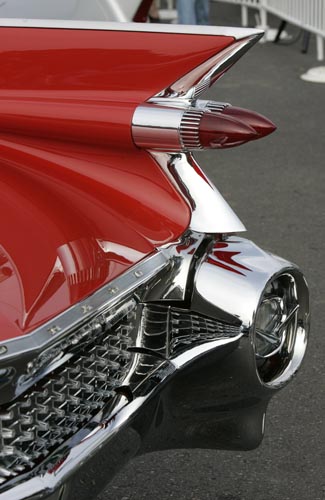Factories that had produced military vehicles during the war were producing new automobiles for the public, television and radio sales increased and production rates were at an all time high. American culture spread throughout other parts of the world such as Europe after the Second World War.

Companies like Coca-Cola expanded internationally and sold more products during and after the war.
Art and the visual language of some cultures also changed. A new pop art movement emerged and was linked to consumer culture ideas. Andy Warhol produced pop art style prints of consumer products such as soup cans.

Design changed after the Second World War, when USA and Russia began the space race and attempted to be the first country to get man to space. Automobiles such as cadillacs had design aspects which resembled space rockets.

A youth culture emerged in the 1950s in the USA and spread out to other countries. The youth had a rebellious nature and lived in the moment. This involved a lot of luxury spending in fashion and cars. Buying things was a way for the younger generations to express themselves.
This culture later spread to Britain. Britain was still rebuilding after the war so rationing and reconstruction meant less optimism than USA. By the 1960s Britain was at the forefront of art and design. Rationing had ended and consumer culture was introduced. Modernization in consumer products meant that design was always changing. People competed to have the newest, coolest designer products.
No comments:
Post a Comment